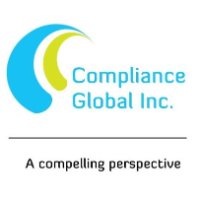Overview:
FDA-mandated post-market studies are here. Phase IV clinical studies are likely to be complex in design and large in scale (possibly 500,000 patients per arm), with exacting endpoints, and obligatory. The FDA appears to be abandoning a long-standing policy of negotiating post-market commitments with sponsors - and will now set mandatory objectives and timelines.
Why Should You Attend:
With the increasing complexity of therapeutic agents – now involving more “biologics” – and an increase of use of new agents beyond the original intention and testing, it is essential to know as early as possible any untoward and unexpected Adverse Events and other serious toxicities. The well-known examples of Drugs pulled from the market after approval attest to the need for Phase IV (Post marketing approval) surveillance.
There is no one-size-fits-all guidance to help a particular drug or drug class prepare for the studies. There are, however Guidance documents for “Risk Minimization Action Plans” and “Good Pharmacovigilance Practices and “Pharmacovigilance Studies” and there is also the ICH E2E Guidance of Pharmacovigilance Planning.
There are a number of points that are only seen in Phase IV (PV) studies and why these are important in the Drug Development process will be covered. These studies (and there are several types of Phase IV/Post Marketing studies) answer important safety questions and because of this and the duration of these studies, they are almost always associated with Data Monitoring Committees(DMC)
Areas Covered in the Session:
• What are the types of Phase IV studies
• The Nature of the I/E criteria in Phase IV studies
• How does the Safety Monitoring Plan differ in Phase IV
• What constitutes a “rare” adverse event?
• Why large studies are needed to uncover rare Serious Adverse Events
• What is the role and value of a DMC in large studies
• What endpoints is the FDA looking for once they have approved a drug/device
• What agents have been pulled after approval and why?
Learning Objectives:
• Identify the main differences between Pre-market and Post-market studies
• Contrast the elements of type II or ‘rare’ Adverse Events with type I Adverse Events
• Describe three AE mechanisms how an agent would be removed from the market after it had been approved
Who Will Benefit:
• Pharmaceutical, Biological and Device Companies
• Principal Investigators and Sub Investigators
• Clinical Research Scientists (PKs, Biostatisticians) Research Managers
• Safety Nurses
• Clinical Research Associates and Coordinators
• Recruiting staff
• QA / QC auditors and staff
• Study Monitors
• Clinical Research Data managers
FDA-mandated post-market studies are here. Phase IV clinical studies are likely to be complex in design and large in scale (possibly 500,000 patients per arm), with exacting endpoints, and obligatory. The FDA appears to be abandoning a long-standing policy of negotiating post-market commitments with sponsors - and will now set mandatory objectives and timelines.
Why Should You Attend:
With the increasing complexity of therapeutic agents – now involving more “biologics” – and an increase of use of new agents beyond the original intention and testing, it is essential to know as early as possible any untoward and unexpected Adverse Events and other serious toxicities. The well-known examples of Drugs pulled from the market after approval attest to the need for Phase IV (Post marketing approval) surveillance.
There is no one-size-fits-all guidance to help a particular drug or drug class prepare for the studies. There are, however Guidance documents for “Risk Minimization Action Plans” and “Good Pharmacovigilance Practices and “Pharmacovigilance Studies” and there is also the ICH E2E Guidance of Pharmacovigilance Planning.
There are a number of points that are only seen in Phase IV (PV) studies and why these are important in the Drug Development process will be covered. These studies (and there are several types of Phase IV/Post Marketing studies) answer important safety questions and because of this and the duration of these studies, they are almost always associated with Data Monitoring Committees(DMC)
Areas Covered in the Session:
• What are the types of Phase IV studies
• The Nature of the I/E criteria in Phase IV studies
• How does the Safety Monitoring Plan differ in Phase IV
• What constitutes a “rare” adverse event?
• Why large studies are needed to uncover rare Serious Adverse Events
• What is the role and value of a DMC in large studies
• What endpoints is the FDA looking for once they have approved a drug/device
• What agents have been pulled after approval and why?
Learning Objectives:
• Identify the main differences between Pre-market and Post-market studies
• Contrast the elements of type II or ‘rare’ Adverse Events with type I Adverse Events
• Describe three AE mechanisms how an agent would be removed from the market after it had been approved
Who Will Benefit:
• Pharmaceutical, Biological and Device Companies
• Principal Investigators and Sub Investigators
• Clinical Research Scientists (PKs, Biostatisticians) Research Managers
• Safety Nurses
• Clinical Research Associates and Coordinators
• Recruiting staff
• QA / QC auditors and staff
• Study Monitors
• Clinical Research Data managers










